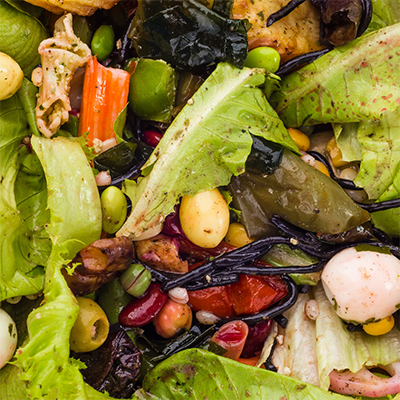Lets work together



Suite 3A, Chapel Allerton House, 114 Harrogate Road, Leeds, LS7 4NY
ukinfo@integrated-skills.com
+44 (0) 3300 888 670

With the thousands of tonnes of waste being buried in UK landfills each year, about half of it comes from biodegradable waste. However, this waste doesn’t have to be sent to landfill sites. Instead, it can be converted into usable energy, also known as biogas through the process of anaerobic digestion.
Benefits of Anaerobic Digestion
Anaerobic digestion has several benefits. Not only can this process reduce fossil fuel usage, but it can also assist with the reduction of methane emissions generated by landfill sites. In addition, anaerobic digestion can assist in the reduction of the organic waste pollution of fresh water, as well as reduce dependence on chemical fertilisers while increasing overall fuel security.
Where does the fuel for Anaerobic Digestion Come From?
Virtually any biodegradable material can be used for the anaerobic digestion process. This includes agricultural waste in the form of manure, feathers and crop residue, food waste from shops, markets and restaurants and waste from sewage and abattoirs as well.
The Journey from Waste to Energy
Once biodegradable waste has been collected, it is stored before being shredded. After shredding, the material is pasteurised. Pasteurisation occurs in a tank heated to approximately 70°C, where waste is placed for one hour to eliminate any bacteria.
Following pasteurisation, the waste is pumped into a main digester, which is a sealed tank. The digester’s micro-organisms break down matter without the presence of oxygen, converting it into hydrogen, acetic acid and fatty acids by releasing enzymes. The result of this conversion are two by-products, which are carbon dioxide and methane, as well as other trace gases.
During its methane-producing stage, biodegradable matter is digested by a type of micro-organism called archaea. This micro-organism is not at all related to bacteria and is therefore not referred to as such.
Stages and Time Required for the Breaking Down of Matter
The anaerobic digestion process encompasses four stages, which are hydrolysis, acidogenesis, acetogenesis and methanogenesis.
The breakdown time for matter depends on its composition. For example, a matter that is in liquid form will take between 15 and 30 days to digest, where the solid matter will take between 12 and 14 days. The temperature of the digester also differs; liquids are heated to between 30 and 35°C, where solids require a temperature of 55°C.
Gas Concentrations and Compression
Around 60% of the biogas that is produced out of the anaerobic digestion process is a combination of carbon dioxide and methane. Biogas is the result of the removal of the small amounts of trace gases. This gas can either be burned, or go through further processing to create biomethane, which is simply the result of the removal of carbon dioxide.
Any biogas produced must first be compressed before being considered ready for use. Compression is accomplished by burning. Burning is most efficiently done at a facility that combines both heat and power. This will allow both heat and electricity to be generated. Any excess electricity not used to power the equipment in the plant is then exported to the national electricity grid for use by UK households and businesses.
A Useful By-Product
In addition to the low carbon, renewable fuel that the anaerobic digestion process produces, it also produces digestate. Digestate is a solid that’s high in nutrients, and ideal for use instead of chemical fertilisers. This matter contains vital soil nutrients like phosphorous and nitrogen that helps soil to maintain its nutrient levels. Digestate is also more nutrient-rich than its compost counterparts.
Anaerobic digestion continues its deployment, with over 140 plants currently operating in the UK. Just over half of these plants are using industrial and food waste, with the remainder of feedstock originating from that which is farm-based.
Would you like to know more about A Beginners Guide to the Anaerobic Digestion Process? Fill in your details below and let us know how we can help.
Website Designed & Built by we are CODA